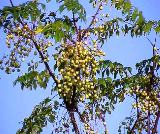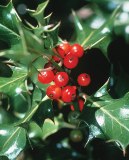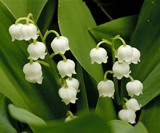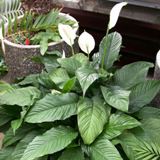Discover Florida Nature
It's time to explore the natural Florida


|
|
|
| Florida Poison Control Center 1-800-222-1222 | |
|
|
Keep a Poison Information Center number near your telephone. If you
suspect possible poisoning from a plant : Call the Poison Center
immediately at 1-800-222-1222! Remove all plant pieces
from mouth. Rinse mouth and lips with cool water. Offer sips of water to
drink. Wash hands with soap and water. If asked to go to the emergency
room take part of the plant, seeds, or berries with you to aid
identification. Chinaberry
(Melia azedarach)- Chinaberry fruits are mucilaginous and sticky, with
hard, round; marble-like seed. Birds spread seed effectively but the
fruits are poisonous to humans and other mammals. Because the seeds are
poisonous, birds may become paralyzed after ingesting seeds. Eating
Chinaberries can cause diarrhea, vomiting, seizures, clammy skin,
weakness and difficulty breathing. This plant grows in the entire state
of Florida. Chinaberry
(Melia azedarach)- Chinaberry fruits are mucilaginous and sticky, with
hard, round; marble-like seed. Birds spread seed effectively but the
fruits are poisonous to humans and other mammals. Because the seeds are
poisonous, birds may become paralyzed after ingesting seeds. Eating
Chinaberries can cause diarrhea, vomiting, seizures, clammy skin,
weakness and difficulty breathing. This plant grows in the entire state
of Florida. Croton
(Codiaeum variegatum)- This is a plant that is green on the top side and
purple or dark red on the underside. It looks like a coleus. Some say
that you will begin to itch by just touching the Croton. Chewing the
bark and roots is said to cause burning of the mouth. The latex has
caused eczema in some gardeners after repeated exposure to the latex
(plant juices). Croton
(Codiaeum variegatum)- This is a plant that is green on the top side and
purple or dark red on the underside. It looks like a coleus. Some say
that you will begin to itch by just touching the Croton. Chewing the
bark and roots is said to cause burning of the mouth. The latex has
caused eczema in some gardeners after repeated exposure to the latex
(plant juices).
 Foxglove
(Digitalis purpurea)-Foxglove plants are toxic, although they are used
medicinally by those who know what they're doing! Foxgloves produce
gorgeous flowers, making them popular despite their infamously toxic
quality. All parts of the plants are poisonous if swallowed or if smoke
from a burning plant is inhaled. Symptoms include nausea, vomiting,
stomach cramps, dizziness, low blood pressure, slow pulse and seizures. Foxglove
(Digitalis purpurea)-Foxglove plants are toxic, although they are used
medicinally by those who know what they're doing! Foxgloves produce
gorgeous flowers, making them popular despite their infamously toxic
quality. All parts of the plants are poisonous if swallowed or if smoke
from a burning plant is inhaled. Symptoms include nausea, vomiting,
stomach cramps, dizziness, low blood pressure, slow pulse and seizures. Holly
(Aquifoliaceae)- Holly berries are mildly toxic and will cause vomiting
and/or diarrhea when ingested by people. For children the holly berry
can be extremely toxic, making them a strong threat, since young
children can be attracted to the bright red color. Eating twenty or more
berries may be lethal for a small child. However they are extremely
important food for numerous species of birds, and also are eaten by
other wild animals. Milky sap from the holly plant can cause skin
irritation. Nausea, vomiting or diarrhea may occur if holly is eaten.
Eating Holly berries can cause drowsiness, vomiting and dehydration. Holly
(Aquifoliaceae)- Holly berries are mildly toxic and will cause vomiting
and/or diarrhea when ingested by people. For children the holly berry
can be extremely toxic, making them a strong threat, since young
children can be attracted to the bright red color. Eating twenty or more
berries may be lethal for a small child. However they are extremely
important food for numerous species of birds, and also are eaten by
other wild animals. Milky sap from the holly plant can cause skin
irritation. Nausea, vomiting or diarrhea may occur if holly is eaten.
Eating Holly berries can cause drowsiness, vomiting and dehydration. Lantana (Lantana
camara)- Lantana is a genus of about 150 species of perennial flowering
plants, native to tropical regions of the Americas, including Florida.
Pets have reportedly become ill after ingesting lantana. The unripe
berries are known to be very toxic and the foliage toxic to livestock.
Lantana is listed as a Category I invasive exotic species by the Florida
Exotic Pest Plant Council, which means that it is known to be "invading
and disrupting native plant communities in Florida. Lantana (Lantana
camara)- Lantana is a genus of about 150 species of perennial flowering
plants, native to tropical regions of the Americas, including Florida.
Pets have reportedly become ill after ingesting lantana. The unripe
berries are known to be very toxic and the foliage toxic to livestock.
Lantana is listed as a Category I invasive exotic species by the Florida
Exotic Pest Plant Council, which means that it is known to be "invading
and disrupting native plant communities in Florida. Lily
of the Valley
(Convallaria majalis)- Every part of the lily of the valley plant is
poisonous because it contains about 20 poisonous glycosides such as
convalatoxin, convalarin, and convalamarin, as well as saponins. They
cause poisoning characterized by strong headache, nausea and vomiting,
slow pulse and excessive urination. The victims are often domesticated
animals because the may lily is a widely distributed cultivated plant. Lily
of the Valley
(Convallaria majalis)- Every part of the lily of the valley plant is
poisonous because it contains about 20 poisonous glycosides such as
convalatoxin, convalarin, and convalamarin, as well as saponins. They
cause poisoning characterized by strong headache, nausea and vomiting,
slow pulse and excessive urination. The victims are often domesticated
animals because the may lily is a widely distributed cultivated plant. Peace
Lily
(Spathiphyllum)- The peace lily is tropical in origin, and depending on
its variety may have leaves up to a foot in length. The foliage is a
deep, shiny green and the plant, when in bloom, can be as tall as four
feet. The plant is toxic. Ingested by children it can cause mouth
ulcerations, and vomiting. A small amount of leaves chewed by a dog or
cat is even more dangerous and potentially lethal. If you suspect a
child or animal has eaten peace lily, you should contact poison control
immediately. Peace
Lily
(Spathiphyllum)- The peace lily is tropical in origin, and depending on
its variety may have leaves up to a foot in length. The foliage is a
deep, shiny green and the plant, when in bloom, can be as tall as four
feet. The plant is toxic. Ingested by children it can cause mouth
ulcerations, and vomiting. A small amount of leaves chewed by a dog or
cat is even more dangerous and potentially lethal. If you suspect a
child or animal has eaten peace lily, you should contact poison control
immediately. |
|
|
Advertise | Privacy Statement | Dog Encyclopedia | Video |Contact | Alaska Nature |
|